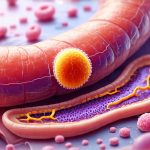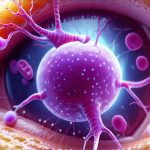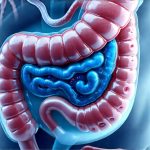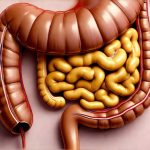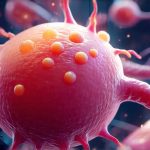Our understanding of the human body is constantly evolving, shifting from a view of individuals as isolated entities to recognizing us as complex ecosystems. Within this ecosystem, the gut microbiome – the vast community of microorganisms residing in our digestive tract – plays an unexpectedly central role in nearly every aspect of our health, extending far beyond just digestion. For years, it was largely overlooked, but emerging research reveals its profound influence on appetite regulation, energy levels throughout the day, and even our resistance to fatigue during physical exertion. This intricate relationship isn’t a one-way street; what we eat profoundly shapes our microbiome, which then, in turn, influences how we feel, how much energy we have, and how effectively our bodies function.
The gut microbiome isn’t simply a passive bystander; it actively communicates with the brain through multiple pathways – the ‘gut-brain axis’. This bidirectional communication system involves neural, hormonal, and immunological signaling, allowing the gut microbiota to influence mood, cognition, and importantly for this discussion, energy homeostasis. The composition of our microbiome—the specific types and abundance of bacteria present—can dramatically impact these processes. Factors like diet, stress levels, antibiotic use, and even genetics all contribute to shaping this complex microbial landscape, ultimately determining how effectively it supports (or hinders) our overall well-being. Understanding this dynamic interplay is key to optimizing both physical and mental performance. You can learn more about gut inflammation affects energy and how to test for it.
Appetite Regulation & The Gut Microbiome
The intricate dance between the gut microbiome and appetite control isn’t about simply feeling ‘full’ or ‘hungry’. It’s a sophisticated system involving hormones, neurotransmitters, and microbial metabolites that influence our food choices, portion sizes, and overall eating behavior. Certain bacterial species can directly impact the production of short-chain fatty acids (SCFAs), such as butyrate, propionate, and acetate, through fermentation of dietary fiber. These SCFAs aren’t just nutrients for colon cells; they also act as signaling molecules, influencing appetite regulation in multiple ways. – They can stimulate the release of gut hormones like peptide YY (PYY) and glucagon-like peptide-1 (GLP-1), which promote feelings of satiety and reduce food intake. – SCFAs can cross the blood-brain barrier and directly influence brain regions involved in reward processing and appetite control.
Furthermore, the microbiome impacts neurotransmitter production. For example, gut bacteria play a role in serotonin synthesis – often dubbed the “happiness hormone” but also crucial for regulating appetite. An imbalance in gut microbiota—known as dysbiosis—can disrupt these processes, potentially leading to increased cravings for unhealthy foods and difficulty controlling portion sizes. Research suggests that individuals with a less diverse microbiome may be more prone to overeating and weight gain. This doesn’t mean blame the bacteria! It highlights how interconnected our dietary choices and gut health are, creating a feedback loop impacting appetite and metabolic function. IBS and gut microbiome have also been closely studied in relation to appetite regulation.
A healthy, diverse microbiome is therefore crucial for maintaining stable blood sugar levels, reducing cravings, and supporting natural appetite regulation. The types of fiber we consume are particularly important here; different fibers support the growth of different bacterial species, influencing SCFA production and ultimately, our appetite control mechanisms.
The Role of Microbial Metabolites in Satiety
Microbial metabolites extend beyond SCFAs to encompass a wide range of compounds produced by gut bacteria during digestion. These metabolites aren’t simply waste products; they’re active substances that exert significant physiological effects. Tryptophan metabolism, for example, is heavily influenced by the microbiome. Gut bacteria can convert tryptophan into various metabolites, some of which influence serotonin production as previously mentioned, and others that impact immune function and gut barrier integrity. A compromised gut barrier – often referred to as “leaky gut” – allows microbial products to enter the bloodstream, triggering inflammation and potentially disrupting appetite control signals.
- Bile acid metabolism is another area where the microbiome plays a pivotal role. Gut bacteria modify bile acids, influencing their absorption and signaling properties, which impacts fat digestion and energy expenditure. – Trimethylamine N-oxide (TMAO) is a metabolite produced from dietary choline and L-carnitine by gut bacteria. Elevated TMAO levels have been linked to cardiovascular disease, but the microbiome’s role in its production underscores the far-reaching impact of microbial metabolism on overall health. Understanding how gut microbiome balance impacts these processes is essential.
Understanding these complex metabolic pathways provides a deeper appreciation for how our diet shapes not just what we eat, but also how we experience hunger and satiety. Personalized nutrition strategies that consider an individual’s microbiome profile may offer tailored approaches to optimizing appetite regulation and supporting long-term weight management.
Fiber’s Impact on Gut Microbiome Diversity
Dietary fiber is arguably the most important factor in shaping a healthy gut microbiome. Unlike simple carbohydrates, fiber isn’t digested in the small intestine; instead, it reaches the colon where it’s fermented by gut bacteria. This fermentation process produces SCFAs and supports microbial diversity. Different types of fiber – soluble vs. insoluble, prebiotic fibers vs. resistant starch – promote the growth of different bacterial species, creating a more resilient and balanced ecosystem. – Soluble fiber (found in oats, beans, apples) dissolves in water, forming a gel-like substance that slows digestion and promotes satiety. It also feeds specific beneficial bacteria. – Insoluble fiber (found in whole grains, vegetables) adds bulk to stool, aiding in regular bowel movements and preventing constipation.
Resistant starch acts similarly to soluble fiber, resisting digestion until it reaches the colon where it’s fermented by gut bacteria. Prebiotic fibers are specifically designed to nourish beneficial bacteria, such as Bifidobacteria and Lactobacilli. Increasing fiber intake gradually is crucial to avoid digestive discomfort. Rapidly increasing fiber can lead to bloating, gas, and other unpleasant symptoms. It’s also important to drink plenty of water to help the fiber move through the digestive system efficiently. Food rotation can further enhance these benefits.
Gut Microbiome & Energy Levels – Beyond Calories In, Calories Out
Energy levels aren’t solely determined by calorie intake; they are intricately linked to mitochondrial function, nutrient absorption, and hormonal balance—all significantly influenced by the gut microbiome. A healthy microbiome enhances our ability to extract energy from food. It helps break down complex carbohydrates, proteins, and fats into absorbable nutrients that fuel our cells. Moreover, certain bacterial species synthesize vitamins like B vitamins (essential for energy metabolism) and vitamin K2 (important for bone health and energy production).
Dysbiosis can impair nutrient absorption, leading to deficiencies that contribute to fatigue and low energy levels. For example, imbalances in the microbiome can hinder iron absorption, a common cause of fatigue. The gut-brain axis plays a critical role here too. An unhealthy microbiome can increase inflammation throughout the body, including the brain, disrupting neurotransmitter balance and contributing to feelings of lethargy and mental fog. SCFAs, again, play a key part – butyrate, for example, is an important energy source for colon cells but also has anti-inflammatory effects that benefit overall well-being. Optimizing gut health isn’t just about what we eat; it’s about supporting the microbial ecosystem that helps us utilize what we eat.
The microbiome influences hormonal regulation of energy levels, too. It impacts cortisol production (the stress hormone) and thyroid hormone conversion – both crucial for maintaining optimal energy balance. Chronic stress can significantly disrupt the gut microbiome, creating a vicious cycle where imbalances exacerbate fatigue and reduce resilience. Vagus nerve regulation also impacts these processes. Understanding how overeating affects the valve can also help to improve gut health. Finally, it is important to remember that menopause affects bloating.


